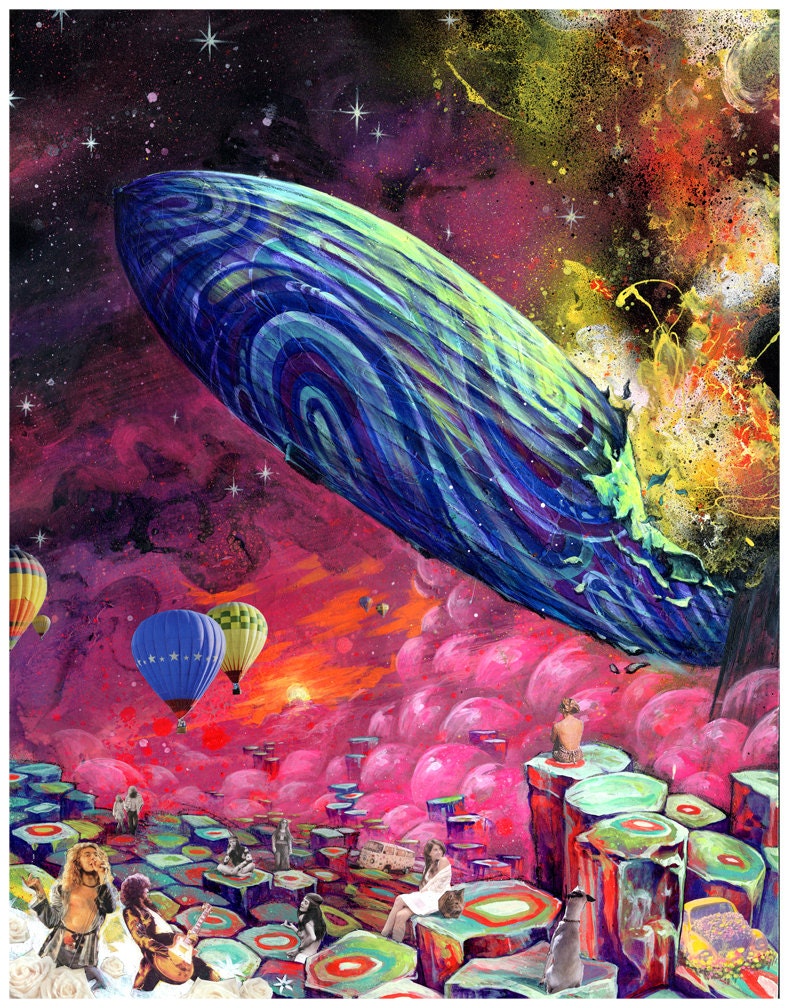

The final cover design shows an antique painting of an old man with a bundle of sticks on his back, hanging on a peeling wall. They wanted to show the world that Led Zeppelin was more than a trend.
#Led zeplin art professional#
The record label tried to convince the band that they were “committing professional suicide,” but their choice was final. It is now known as “Led Zeppelin IV,” but it was originally meant to have no title at all. Needless to say, Atlantic Records was devastated when they found out the album would have no name, no cover title, and no artist credits. It was rumored that their fourth album would be otherworldly. Free from distractions at the remote, crumbling house, the band used the natural acoustics at Headley to experiment with new sounds in their creative seclusion. The band took a “retreat” to Headley Grange, a two-hundred-year-old mansion in the English countryside, to record the majority of their upcoming album.

#Led zeplin art full#
They gave the foursome full creative control over every aspect of their music, including the album covers. The band and Atlantic Records had a steady, gracious relationship up until “IV’s” release.

They chalked the band’s fame up to “hype, not talent.” Their first three albums, especially “II” and “III”, had the band’s faces plastered all over the record sleeves, leading harsh music journalists to believe that Led Zeppelin was nothing more than a fad. Fans around the world worshipped them and their hard-hitting, experimental rock, but critics weren’t as adoring. Welcome back to the “Behind the Cover” series! This week, I’ll be diving into the story behind one of the most iconic album covers in the history of classic rock: “Led Zeppelin IV.” I first heard about the cover’s origin in rock journalist Brad Tolinski’s book, “Light and Shade: Conversations with Jimmy Page.” Filled with interviews and stories about the guitarist’s life, one of the points Toliksni touches on in the sixth chapter is the making of “Led Zeppelin IV.” The Backstoryīy 1971, Led Zeppelin was quickly reaching international success.


 0 kommentar(er)
0 kommentar(er)
